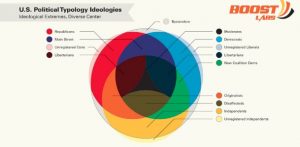When defining marketing 4.0, expert Philip Kotler stressed the growing importance of customer experience in their purchasing decisions.
As Kotler noted, modern consumers tend to prefer companies that don’t treat them as mere numbers on a spreadsheet, but rather in a humanized and personalized way.
This understanding guides most Content Marketing strategies, which aim to establish a relationship of trust with the buyer persona, first attracting visitors and then converting them into leads.
It’s necessary to create unique and engaging experiences in order to overcome the high competition in this market.
This is where Interactive Marketing comes in. By using elements with traits of interactivity (like interactive content), it’s possible to optimize all stages of your sales funnel, from attraction to conversion, through nurturing.
Want to know more about it? In this post, you will find out:
- What is Interactive Marketing?
- In which areas can this strategy be useful?
- How to conduct Interactive Marketing in practice
- Wrap Up
What is Interactive Marketing?
Interactive Marketing is a strategy that aims to encourage the buyer persona to interact with the brand, thus generating a proper setting for its attraction, nurturing, and conversion.
It’s a very efficient way to enhance consumer engagement and, at the same time, provide an extremely qualified experience.
As we mentioned at the beginning of the article, this type of action is fundamental to gain the confidence of the modern consumer, increasing the chances of creating a loyal relationship.
The idea of interactivity is to put the customer at the center of the processes carried out by the company, enabling a feeling of inclusion and collaboration.
Thus, it’s possible to create an open dialogue with your persona, leaving them in a position where they can feel in control of the experience.
However, this doesn’t mean that the benefits of Interactive Marketing are restricted to the relationship between brand and client.
They are also essential for your strategic development.
That’s because, by talking to people interested in your solutions, you get precious feedback. If inserted in your decision-making, these insights can bring optimizations in several actions and areas of the company, as we’ll show throughout the next topic.
In which areas can this strategy be useful?
To understand the usefulness of Interactive Marketing, you need to be aware that this strategy focuses on exchanging information with the audience.
Therefore, if you want to implement it in your company, start by forgetting the idea that your brand is in control of the relationship with customers.
In the age of marketing 4.0, the public is at the top of the market hierarchy, which gives them the power to dictate trends, even indirectly.
What does that mean? The answer is simple: to execute the strategy properly, you need to start capturing the buyer persona’s preferences and shape your approach accordingly.
Data collection
We have now reached the first area that can benefit from the practice of Interactive Marketing: data intelligence.
Working with data mining has become essential in the current scenario, mostly because modern consumers prefer personalized actions.
More than that, capturing data is fundamental for the company itself to develop its actions properly, focusing, for example, on the most appropriate target audience for its contents.
Having access to the audience’s demographic information, such as age, education, and location, is crucial for creating well-targeted campaigns.
If you have some experience in the subject, you know the most commonly used practices to gather this kind of knowledge, right?
Questionnaires, surveys, landing pages, and quizzes are very relevant resources in this sense. What Interactive Marketing does is boost your results by capturing the public’s interest.
A survey focused on this type of strategy listened to more than 20,000 marketing professionals and arrived at a very suggestive result: 87% of respondents agree that interactive content is much more effective in attracting and keeping Internet users.
Want an example? Imagine a potential customer coming to your landing page and facing quizzes and other elements with interactive features.
This simple detail may be enough for them to stay longer on the page, either by answering the questionnaire or looking for more information about the company.
While increasing the possibilities of conversion, the quizzes serve a much greater purpose. With the answers left by the visitor, you get a better idea about the stage of the funnel in which they are and learn more about their preferences.
Thus, even if the landing page doesn’t convert, it will be useful to deepen your knowledge about the buyer persona.
Lead nurturing
Data capture is essential for developing a strategy capable of generating leads and converting them into customers.
However, for this conversion to happen, there must be a well-functioning nurturing approach that can differentiate itself from the various contents that the Internet user consumes daily.
One of the many resources that can be used in this phase of the funnel, called consideration, is the infographic.
By adding the element of interactivity, you give the lead an extra reason to consume the content, making the learning experience more fun and interesting.
An excellent example in this sense is this interactive infographic created by the San Francisco Chronicle to educate its readers about the different tours offered by the Rocky Mountaineer company.

In the form of a flow chart, the material allows the user to control the experience, generating greater engagement.
Another type of content that we can cite as a model for lead nurturing is the interactive calculator. Imagine that your prospects are in the decision phase, and you want to make clear how your company can increase their results.
Offering anROI calculator like this one created by Symantec can be the necessary push for conversion.

Consumer loyalty
Once attracted and converted, the consumer needs to be made loyal. This gives the company a loyal customer base, essential for the brand’s reputation, and for attracting new clients, creating a true cycle.
However, creating fidelity isn’t a simple activity.
In order to carry it out, it’s necessary to understand that the consumer’s journey doesn’t end at the moment of purchase.
Instead, it must continue to be nurtured with content that adds value and maintains proximity between the customer and the company.
To begin with, you can work on an interactive after-sales service, such as a questionnaire on the solution offered.
More than that, you need to give the consumer reasons to continue consuming what your brand has to offer.
This includes actions such as reward programs and the offer of prizes. The latter, incidentally, has been brilliantly accomplished by NetApp through this interactive quiz.

In order to test the customer’s knowledge on a specific subject, the content offers prizes according to the attendance and performance of users.
This setting, marked by gamification, creates a unique experience, which will certainly stamp your brand in the consumer’s mind.
How to conduct Interactive Marketing in practice
Now that you understand the principles of Interactive Marketing, and know some of the main types of interactive content, you can start implementing this strategy.
To do so, it’s essential to draw up a clear plan, starting by defining the objectives to be achieved with this approach.
From this definition, you’ll certainly understand which interaction resource can be most beneficial to accomplish your goals. For example, if you want to know more about the consumer, an interactive quiz may be the solution.
On the other hand, if you seek to nurture the lead with materials that stimulate conversion, an interactive ebook is more appropriate.
It’s crucial to understand that it’s not enough to launch a few punctual materials using interactivity and expect quick results.
They should be part of the company’s DNA, enabling data capture, for example, to have no end in itself, but to be used to optimize the whole strategy.
Therefore, it’s valid to emphasize the importance of inserting the value given to interactivity in your organizational culture.
Those responsible for areas such as content creation, strategic planning, customer service, and social media management must be ready to stimulate interaction and engage with the persona.
Wrap Up
Implementing Interactive Marketing in your company requires a process initiated by understanding the efficiency of this approach. From then on, you must fit the concepts of interactivity into your company’s characteristics without losing your originality.
When well applied, the strategy optimizes your marketing activities, from the buyer persona’s attraction to their conversion into a customer.
Ready to boost your Interactive Marketing strategy? Download our ebook and learn how to take your interactive content to the next level!
Start creating interactive content with Ion and increase your marketing results!
Start creating interactive content with Ion and increase your marketing results!








